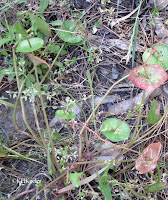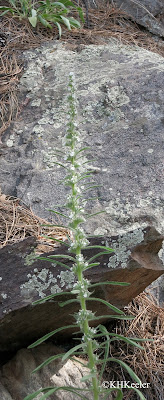Two very important things happened to plant names in the botanical world starting in the 1980s: the flora of North America project and DNA sequencing. I'll talk about the Flora of North America today and DNA sequencing next time.
For the post on California coastal forests ( LINK) I looked up the plants I saw this May in plant books published in the 1970s. I found the plants but when I checked, almost all the names had been changed. Specifically star flower, in the old books as Trientalis latifolia is now Trientalis europaea, what was called Rubus vitifolius, the Pacific dewberry is now Rubus ursinus and Montia perfoliata, miner’s lettuce is now Claytonia perfoliata,
Books and botanists tell people that each plant or animal has only one scientific name so it is surprising and a bit annoying to discover the name you learned is incorrect.
Why?
Because the goal of botanical plant classification is to organize the more than 400,000 land plants in a way that reflects the evolutionary relationships between them. So, for example, onions and garlic are grouped with each other and not with lemons and oranges.
But the plants are put in groups by people using the available information, and the available information changes.
The flora of North America project significantly changed the evidence botanists considered.
A flora is a list of plants from a region, usually with keys (instructions) for distinguishing one from another, and information on each plant including its description and distribution.
Before the 1980s, most US floras were for a single state, for example the Flora of California (1959), the Flora of Missouri (1965) and the Vascular Plants of South Dakota (1976). Gray's Manual of Botany (1970) covered the central and northeastern U.S. and the Flora of the Great Plains (1986) is for 4 plains states and parts of 12 others, but that was broad as coverage got. There was no bigger picture.
A flora is a list of plants from a region, usually with keys (instructions) for distinguishing one from another, and information on each plant including its description and distribution.
Before the 1980s, most US floras were for a single state, for example the Flora of California (1959), the Flora of Missouri (1965) and the Vascular Plants of South Dakota (1976). Gray's Manual of Botany (1970) covered the central and northeastern U.S. and the Flora of the Great Plains (1986) is for 4 plains states and parts of 12 others, but that was broad as coverage got. There was no bigger picture.
In 1982 the Flora of North America North of Mexico was launched, to put all the North American plants in a single work. There are about 20,000 native and naturalized (from elsewhere, growing wild here now) plants in North America north of Mexico. To do this flora, different subgroups were assigned to specialists and teams of specialists. It takes years to gather the information, analyse and publish it. The Flora of North America is planned as 30 volumes, in print and on the web. In 2013, 16 of the 30 volumes have been published. Even just at half way, they are revolutionizing the relationships and consequently the names of North American plants.
 |
| miner's lettuce, Claytonia perfoliata |
 |
| Claytonia virginica spring beauty |
In the case of of Rubus vitifolius and Trientalis latifolia, both of those were determined to be part of widespread species, not species in their own right. Therefore these plants became Rubus ursinus and Trientalis europaea.
The miner’s lettuce story is the same but at a higher level: Montia perfoliata was deemed to be more like its Claytonia relatives than its Montia relatives, and so is now in the genus Claytonia.
 |
| Oreocarpa virgata formerly Cryptantha virgata |
 |
| Cryptantha minima |
Practically, this means that when you find a name changed in a recent, reputable source, online or in print, it generally reflects the latest data and should be used instead of older names.
There would certainly have been changes in plant names due to the writing of the Flora of North America, but the concurrent emergence of DNA sequencing has producing additional, often surprising new data. Integrating that into plant classification is making even more changes. Of that, more next time.
Comments and corrections welcomed.
Other Sources Consulted:
Moran, Nancy. History of the Flora of North American project http://floranorthamerica.org/history’
Kathy Keeler, A Wandering Botanist
Other Sources Consulted:
Moran, Nancy. History of the Flora of North American project http://floranorthamerica.org/history’
Kathy Keeler, A Wandering Botanist
More at awanderingbotanist.com
Join me on Facebook

No comments:
Post a Comment